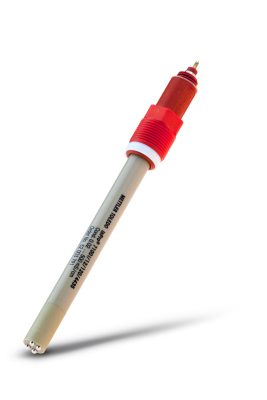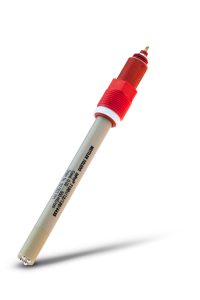METTLER TOLEDO offers the InPro 7100(i) series of conductivity sensors designed for the Biopharmaceutical, Pharmaceutical, Food & Beverage, Chemical, and Pulp & Paper industries. The PEEK shaft material offers high resistivity against aggressive liquids and is particularly suitable for processes with frequent CIP/SIP cycles. The InPro 7100(i) digital inline conductivity probe is particularly suited for use with single use mixing and buffer storage bags. The InPro 7100 can also be used for sterile insertion into bioprocess containers.
While the InPro 7100 gives an analog output signal, the new InPro 7100(i) conductivity sensors feature Mettler’s digital Intelligent Sensor Management (ISM®) technology. The benefits of ISM include fast measurement start up thanks to Plug and Measure. All relevant sensor data are stored on a microchip within the sensor’s head and are automatically uploaded to the transmitter as soon as it is connected. The digital data transfer signal is insensitive to electromechanical interference and therefore ensures safety and reliability for your production processes.
Interface the sensor to your vessel, pipe, or open channel with one of Ingold’s many stationary or retractable housings. Products are engineered to meet or exceed all FDA and GMP requirements. Complete your conductivity measurement with a suitable cable and transmitter.
When considering Conductivity sensor features the following attributes should be taken into account:
- High Versatility: The InPro 7100(i) is compatible with a wide choice of static (InFit® and InDip® series) and retractable (InTrac® series) housings. Use with any process adaption
is possible.
- WideRange™ technology: saves costs and increases measurement accuracy. The WideRange technology keeps the sensor design small and easy to fit, allowing installation in small diameter pipes (DN50).
- Fast response time: The InPro 7100(i)‘s response time allows quick detection of process changes, leading to better process control.
- Easy process integration: The compact design of the InPro 7100(i) makes it compatible with the wide choice of Ingold housings, opening a wide range of integration options.
- Temperature Compensation: METTLER TOLEDO‘s conductivity sensors incorporate temperature compensation to ensure accurate readings under varying temperature conditions.
- Calibration: Regular calibration is crucial for accurate measurements. Mettler Toledo sensors offer user-friendly calibration procedures.
- Digital Connectivity: METTLER TOLEDO’s conductivity sensors, with ISM technology, provides digital communication options, allowing integration with data acquisition systems, control systems and PLC’s to facilitate data transfer.
- Compatibility: METTLER TOLEDO conductivity sensors are designed to be compatible with various Mettler Toledo instruments and meters, providing flexibility in laboratory and industrial setups.
- Cleaning and Maintenance: These sensors are designed with features that facilitate easy maintenance and cleaning, ensuring reliable and consistent performance over time.
- Application-Specific Designs: METTLER TOLEDO offers conductivity sensors tailored for specific applications, such as high-purity water measurements, process control in the pharmaceutical industry, or environmental monitoring.
- Compliance with Industry Standards: All of the conductivity sensors comply with relevant industry standards and regulations.


